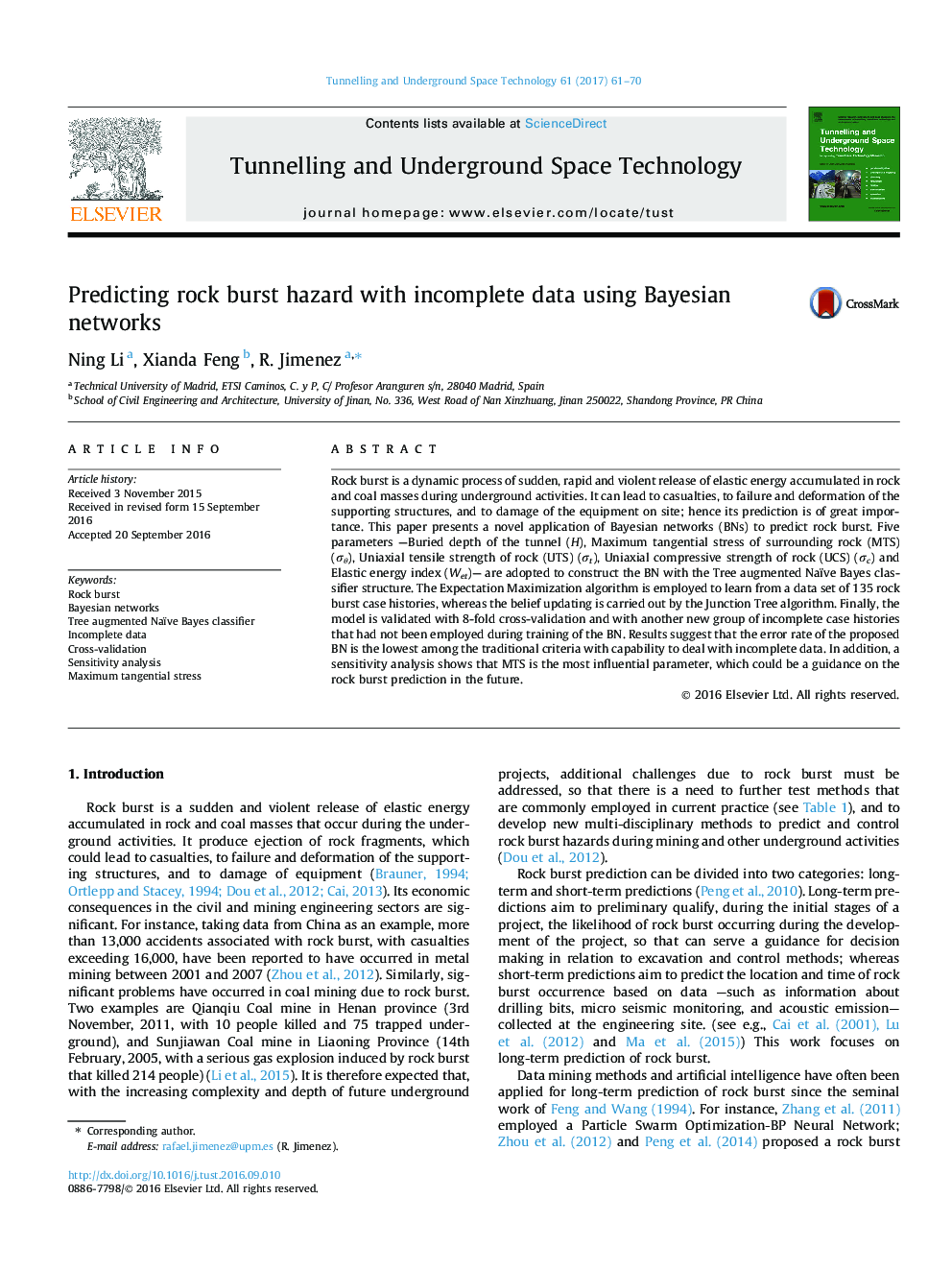| Article ID | Journal | Published Year | Pages | File Type |
|---|---|---|---|---|
| 4929398 | Tunnelling and Underground Space Technology | 2017 | 10 Pages |
Abstract
Rock burst is a dynamic process of sudden, rapid and violent release of elastic energy accumulated in rock and coal masses during underground activities. It can lead to casualties, to failure and deformation of the supporting structures, and to damage of the equipment on site; hence its prediction is of great importance. This paper presents a novel application of Bayesian networks (BNs) to predict rock burst. Five parameters -Buried depth of the tunnel (H), Maximum tangential stress of surrounding rock (MTS) (Ïθ), Uniaxial tensile strength of rock (UTS) (Ït), Uniaxial compressive strength of rock (UCS) (Ïc) and Elastic energy index (Wet)- are adopted to construct the BN with the Tree augmented Naïve Bayes classifier structure. The Expectation Maximization algorithm is employed to learn from a data set of 135 rock burst case histories, whereas the belief updating is carried out by the Junction Tree algorithm. Finally, the model is validated with 8-fold cross-validation and with another new group of incomplete case histories that had not been employed during training of the BN. Results suggest that the error rate of the proposed BN is the lowest among the traditional criteria with capability to deal with incomplete data. In addition, a sensitivity analysis shows that MTS is the most influential parameter, which could be a guidance on the rock burst prediction in the future.
Keywords
Related Topics
Physical Sciences and Engineering
Earth and Planetary Sciences
Geotechnical Engineering and Engineering Geology
Authors
Ning Li, Xianda Feng, R. Jimenez,
